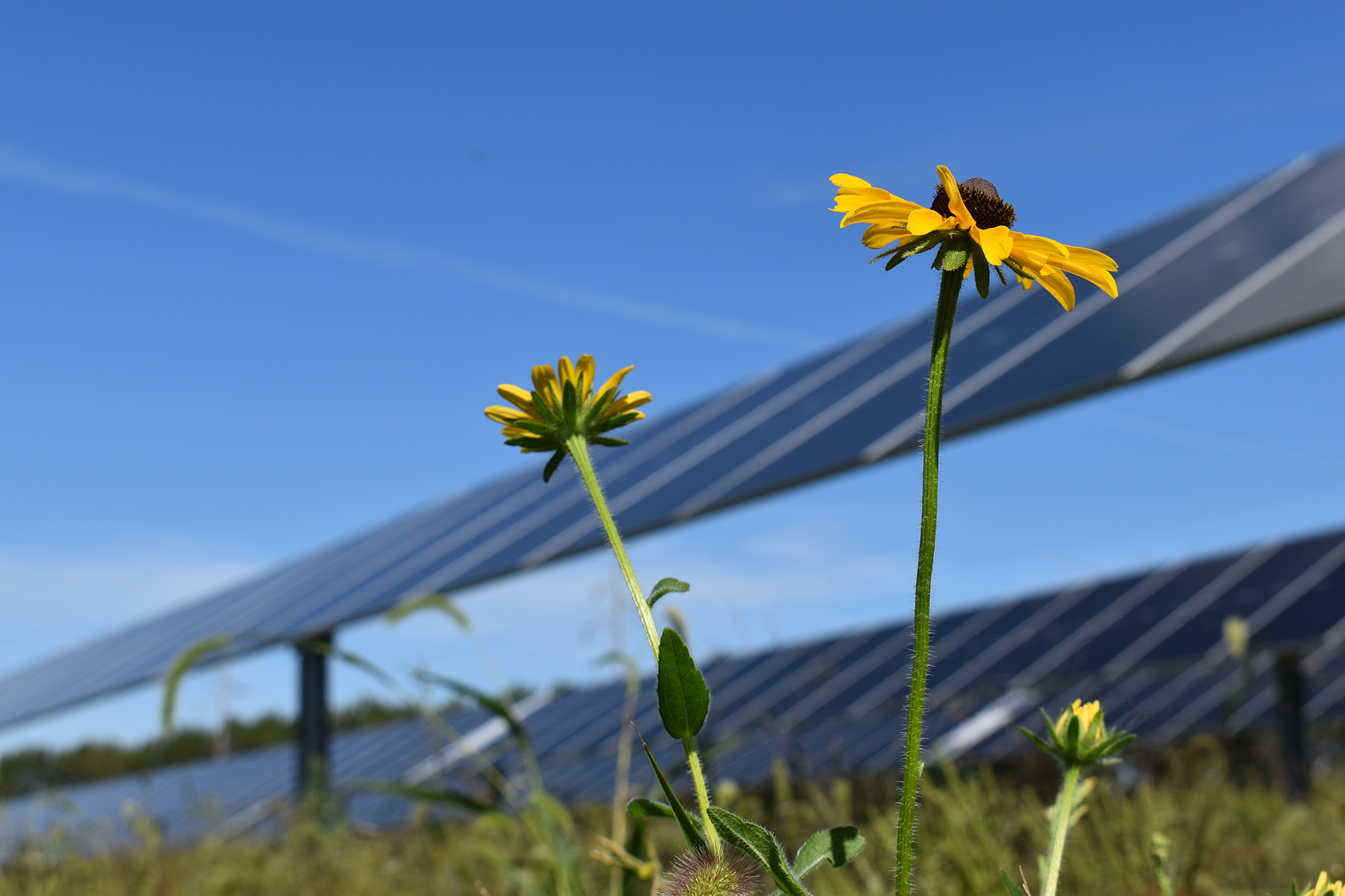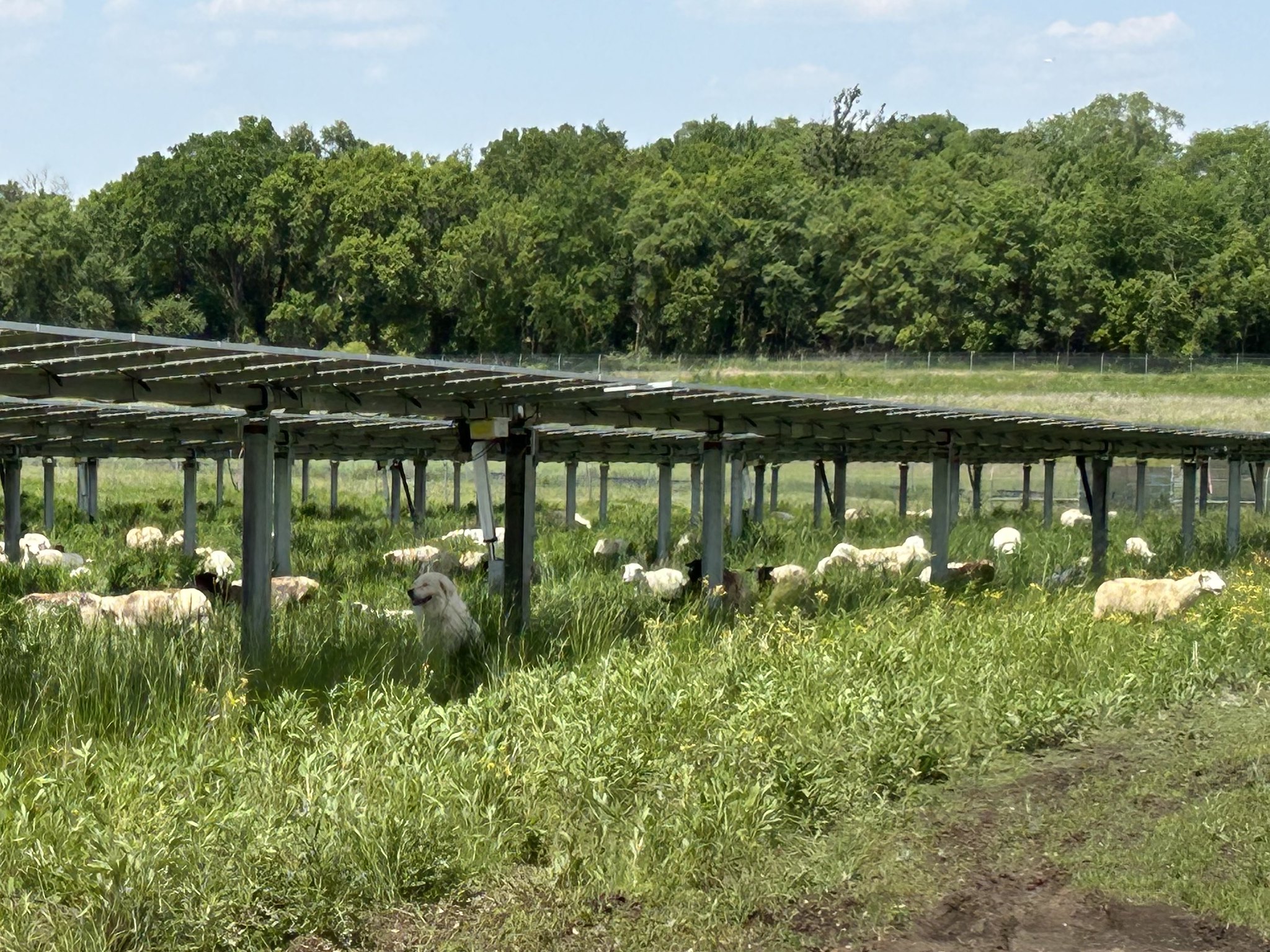Pollinator habitat blooms beneath a major metro solar installation

We chose shorter prairie wildflowers that pollinators love — like black-eyed Susan, butterfly milkweed and wild columbine — to seed among the solar panels.
Beneath rows and rows of solar panels in Rosemount, FMR is creating 360 acres of pollinator-supporting plantings.
We’ve worked on habitat improvement at the Flint Hills Resources Pine Bend Refinery for many years, including parts of Pine Bend Bluff Natural Area. Flint Hills Resources’ solar installation, turned on in 2023, is a carbon-free energy source that supplies up to one-third of the refinery’s electricity needs. And the open ground beneath the panels offered a major opportunity to build new habitat.
Hundreds of acres of new habitat
Since 22% of North American pollinators are in decline due to habitat loss and fragmentation, when there’s a chance to create new or enhanced plantings, we take it. To make quality habitat a part of this unique project, we’ve been restoring the site since 2023 with a specially designed seed mix of native, short-statured, pollinator-focused species that will provide blooms throughout the growing season.
The scale of this continuous planting is massive. In addition to the solar field, we’re also working on over 100 acres of woodland restoration right around the solar site, making nearly 500 acres of contiguous habitat — one of our largest projects yet.
We finished seeding the last phase of the solar installation planting in April 2025, and woodland restoration will continue over the next few years.
Solar panels, flowers and … sheep!
This project is FMR’s first foray into habitat creation under and around solar panels, and it has not been without challenges. Construction delays, Minnesota weather and the site’s technical design required us to be flexible and adapt.
Typically we help new seedlings get a foothold by mowing weedy plants that compete for light and water. But we can’t easily mow a site filled with sensitive equipment like solar panels and wiring. Our workaround? Sheep!
These solar grazers eat up the weeds so they don’t shade the panels and allow smaller seedlings to reach the sun. A more cost-effective way to reduce weeds on a project like this, solar grazing also improves the soil’s water infiltration and nutrient density.
We’re excited to see how the site changes over the next few years. Once plants are established, we’ll conduct pollinator surveys to see which critters have found their way to the new blooms. We look forward to sharing our findings to support more projects that combine renewables with habitat creation.

Over 400 sheep, some with lambs at their sides, arrived in early June to graze down weedy plants under the solar panels, making room for native, pollinator-supporting plants to thrive.